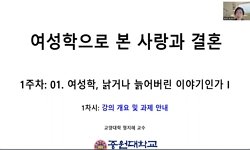This paper argues that in the study of matriliny in Kerala, insufficient attention has been paid to the post-marriage residence norm of virilocality in which a woman goes to reside in her husband’s house after marriage. This has led to considerable ...
http://chineseinput.net/에서 pinyin(병음)방식으로 중국어를 변환할 수 있습니다.
변환된 중국어를 복사하여 사용하시면 됩니다.
- 中文 을 입력하시려면 zhongwen을 입력하시고 space를누르시면됩니다.
- 北京 을 입력하시려면 beijing을 입력하시고 space를 누르시면 됩니다.



Why did you send me like this? : Marriage, Matriliny and the ‘Providing Husband’ in North Kerala, India
한글로보기https://www.riss.kr/link?id=A82710782
- 저자
- 발행기관
- 학술지명
- 권호사항
-
발행연도
2011
-
작성언어
English
- 주제어
-
KDC
337.000
-
등재정보
KCI등재,SSCI,SCOPUS
-
자료형태
학술저널
-
수록면
32-65(34쪽)
-
KCI 피인용횟수
6
- 제공처
- 소장기관
- ※ 대학의 dCollection(지식정보 디지털 유통체계)을 통하여 작성된 목록정보입니다.
-
0
상세조회 -
0
다운로드
부가정보
다국어 초록 (Multilingual Abstract)
This paper argues that in the study of matriliny in Kerala, insufficient attention has been paid to the post-marriage residence norm of virilocality in which a woman goes to reside in her husband’s house after marriage. This has led to considerable romanticization of what matriliny meant for women in everyday life. In focusing on a caste called the Thiyyas, who have a history of matrilineal descent and inheritance, the paper explores the way the norm of virilocality is coupled with the idea of the ‘providing husband.’ I consider the idea of the ‘providing’ husband as both central to the image of a normative conjugality among the Thiyyas and also as an idea that has characterized legislative changes in matriliny and marriage since the late nineteenth century. Further, I argue that the idea of the ‘providing husband’ and post-marriage virilocal residence are coupled not only with a strong sense of a dependent wife but a husband’s unequivocal authority. However, what marks out this context is that women inherit property and have a right to return to their natal homes. These practices in turn enable considerable flexibility in residence in everyday life.
목차 (Table of Contents)
- Introduction
- Legislative Changes and the Imperative of the ‘Providing' Husband
- ‘Providing’ and the Normative Structure of Conjugality
- The Rule of Virilocality, Women’s Inheritance and the Negotiation of Residence
- Remembering their Marriage: Two Stories of ‘Providing’
- Introduction
- Legislative Changes and the Imperative of the ‘Providing' Husband
- ‘Providing’ and the Normative Structure of Conjugality
- The Rule of Virilocality, Women’s Inheritance and the Negotiation of Residence
- Remembering their Marriage: Two Stories of ‘Providing’
- Shamala
- Yeshoda
- Conclusion
- Acknowledgements
- Notes
- References
참고문헌 (Reference)
1 Phadke, Shilpa, "Why Loiter?: Women and Risk on Mumbai Streets" Penguin India 2011
2 Dube, Leela, "Who Gains from Matriliny? Men, Women and Change on an Indian Island, In Shifting Circles of Support: Contextualising Gender and Kinship in South Asia and Sub-Saharan Africa" Sage 1996
3 Reiter, Rayna R., "Toward an Anthropology of Women" Monthly Review Press 1975
4 Gough, Kathleen E., "Thiyyar: North Kerala, In Matrilineal Kinship" University of California Press 1961
5 Arunima, G., "There Comes Papa: Colonialism and the Transformation of Matriliny in Malabar, Kerala. C. 1850-1940" Orient Longman 2003
6 Abraham, Janaki, "The Stain of White: Liaisons, Memories, and White Men as Relatives" 9 (9): 131-151, 2006
7 Fuller, C.J., "The Nayars Today" Cambridge University Press 1976
8 Mukhopadhyay, Swapna, "The Enigma of the Kerala Woman: a Failed Promise of Literacy" Social Science Press 2007
9 "Report of the Malabar Marriage Commission" Lawrence Asylum Press 1891
10 Jeffrey, Robin, "Politics, Women and Well Being: How Kerala became ‘A Model,’" Oxford University Press 1993
1 Phadke, Shilpa, "Why Loiter?: Women and Risk on Mumbai Streets" Penguin India 2011
2 Dube, Leela, "Who Gains from Matriliny? Men, Women and Change on an Indian Island, In Shifting Circles of Support: Contextualising Gender and Kinship in South Asia and Sub-Saharan Africa" Sage 1996
3 Reiter, Rayna R., "Toward an Anthropology of Women" Monthly Review Press 1975
4 Gough, Kathleen E., "Thiyyar: North Kerala, In Matrilineal Kinship" University of California Press 1961
5 Arunima, G., "There Comes Papa: Colonialism and the Transformation of Matriliny in Malabar, Kerala. C. 1850-1940" Orient Longman 2003
6 Abraham, Janaki, "The Stain of White: Liaisons, Memories, and White Men as Relatives" 9 (9): 131-151, 2006
7 Fuller, C.J., "The Nayars Today" Cambridge University Press 1976
8 Mukhopadhyay, Swapna, "The Enigma of the Kerala Woman: a Failed Promise of Literacy" Social Science Press 2007
9 "Report of the Malabar Marriage Commission" Lawrence Asylum Press 1891
10 Jeffrey, Robin, "Politics, Women and Well Being: How Kerala became ‘A Model,’" Oxford University Press 1993
11 Gough, Kathleen E., "Nayars and the Definition of Marriage" 89 : 23-34, 1959
12 Gough, Kathleen E., "Nayar: Central Kerala; Nayar: North Kerala; The Modern Disintegration of Matrilineal Descent Groups, In Matrilineal Kinship" University of California Press 1961
13 Dube, Leela, "Matriliny and Islam: Religion and Society in the Laccadives" National Publishing House 1969
14 Saradamoni, K., "Matriliny Transformed: Family, Law and Ideology in Twentieth Century Travancore" Sage Publications 1999
15 Gough, Kathleen E., "Mappilla: North Kerala, In Matrilineal Kinship" University of California Press 1961
16 Kodoth, Praveena, "Looking beyond Gender Parity: Gender Inequities of some Dimensions of Well-being in Kerala" 3278-3286, 2005
17 Jeffrey, Robin, "Legacies of Matriliny: The Place of Women and the ‘Kerala Model’" 77 (77): 647-668, 2004
18 den Uyl, Marion, "Invisible Barriers: Gender, Caste, and Kinship in a Southern Indian Village" International Books 1995
19 Radcliffe-Brown, A.R., "Introduction, In African Systems of Kinship and Marriage" Oxford University Press 1950
20 Kodoth, Praveena, "Here Comes Papa : Matriliny, Men and Marriage in Early Twentieth Century Malabar" North East Hill University 2003
21 Kodoth, Praveena, "Gender, Caste and Matchmaking in Kerala: A Rationale for Dowry" 39 (39): 263-283, 2008
22 Thurston, Edgar, "Ethnographic Notes in Southern India" Government Press 1906
23 Panda, Pradeep Kumar, "Domestic Violence against Women in Kerala" Centre for Development Studies 2004
24 Gough, Kathleen E., "Changes in Matrilineal Kinship on the Malabar Coast" Cambridge University 1950
25 Agarwal, Bina, "A Field of One’s Own: Gender and Land Rights in South Asia" Cambridge University Press 1994
동일학술지(권/호) 다른 논문
-
Chinese Women and the Cyberspace
- Ewha Womans University Press
- ZHENG, Jing
- 2011
- KCI등재,SSCI,SCOPUS
-
Measures of Women’s Status and Gender Inequality in Asia
- Ewha Womans University Press
- Lee, Jae Kyung
- 2011
- KCI등재,SSCI,SCOPUS
-
- Ewha Womans University Press
- LAI, Wan Teng
- 2011
- KCI등재,SSCI,SCOPUS
-
Mothers’ Survival Experiences in Cases of Incestuous Sexual Abuse of Girls
- Ewha Womans University Press
- KIM, Kyung Hee
- 2011
- KCI등재,SSCI,SCOPUS
분석정보
인용정보 인용지수 설명보기
학술지 이력
| 연월일 | 이력구분 | 이력상세 | 등재구분 |
|---|---|---|---|
| 2023 | 평가예정 | 해외DB학술지평가 신청대상 (해외등재 학술지 평가) | |
| 2020-01-01 | 평가 | 등재학술지 유지 (해외등재 학술지 평가) |  |
| 2014-02-11 | 학술지명변경 | 한글명 : Asian Journal of Women`s Studies -> Asian Journal of Women's Studies |  |
| 2011-01-01 | 평가 | 등재학술지 유지 (등재유지) |  |
| 2009-01-01 | 평가 | 등재학술지 유지 (등재유지) |  |
| 2007-01-01 | 평가 | SSCI 등재 (등재유지) |  |
| 2005-01-01 | 평가 | 등재학술지 선정 (등재후보2차) |  |
| 2002-01-01 | 평가 | 등재후보 1차 PASS (등재후보1차) |  |
| 1999-07-01 | 평가 | 등재후보학술지 선정 (신규평가) |  |
학술지 인용정보
| 기준연도 | WOS-KCI 통합IF(2년) | KCIF(2년) | KCIF(3년) |
|---|---|---|---|
| 2016 | 0.2 | 0.16 | 0.19 |
| KCIF(4년) | KCIF(5년) | 중심성지수(3년) | 즉시성지수 |
| 0.2 | 0.18 | 0.356 | 0.08 |




 RISS
RISS







